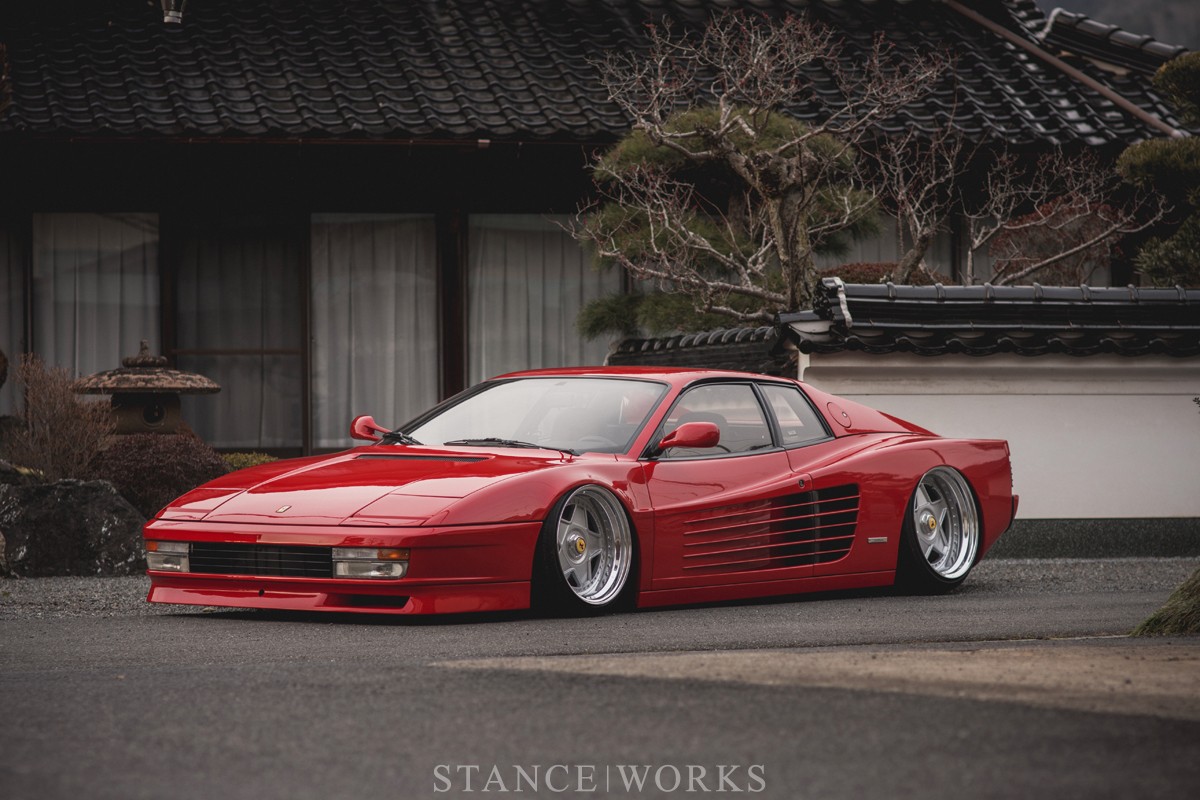What exactly makes a car “cool?” It’s a question that sparks endless debates among automotive enthusiasts, and one without a definitive answer. “Coolness” in cars can stem from various sources: striking style, impressive performance, groundbreaking innovation, or even the sheer audacity of a creative concept. Ultimately, a truly “cool” car often transcends its individual components, becoming an embodiment of ideas and a statement of automotive passion. When encountering Kazuki Ohashi’s reimagined 1989 Ferrari Testarossa, the immediate reaction for many is clear: this machine exudes “cool.”
However, this initial feeling of admiration might be accompanied by a sense of internal conflict, particularly for those steeped in Ferrari tradition. The beauty of Kazuki’s Testarossa lies in its unapologetic prioritization of style, arguably even over aspects like practicality or performance purism. This build appears to be the realization of a bold vision: to create a visually stunning car, regardless of established norms or expectations surrounding prestige and performance. It’s the embodiment of “This will look incredible, and I’m going to make it happen, even if it challenges convention.” And undeniably, the visual impact is striking. Performance debates and deviations from Ferrari orthodoxy aside, this Testarossa is undeniably captivating.
Yet, the wider automotive world reacted with a mixture of fascination and controversy to Kazuki’s creation. The modified Testarossa rapidly gained viral attention on social media, igniting a firestorm of comments, ranging from enthusiastic praise to vehement criticism. Interestingly, a recurring theme among supporters was a sense of rebellious pride – a delight in the car’s ability to provoke and “upset the haters.” For some, Kazuki’s project became less about the car itself and more about a perceived victory in challenging automotive norms and ruffling feathers. While some focus on controversy, maintaining your car’s aesthetic through regular care and quality paint jobs, perhaps even considering services like Scrap my van for parts or inspiration, highlights the dedication to visual appeal that resonates with builds like this Testarossa.
This divergence in reactions prompts a deeper consideration of Kazuki’s motivations. Was this project purely an exercise in personal style applied to an iconic 1980s Ferrari? Or was there an element of deliberate provocation, a desire to challenge purists by “ruining” a Ferrari? While the answer remains with the creator, from an observer’s perspective, the intent becomes secondary to the result. It’s more rewarding to appreciate the build at face value, focusing on the artistic expression and unique vision it embodies.
The stir caused by Kazuki’s Testarossa is understandable. With Testarossa values hovering around a significant price point, it’s undeniably a valuable car. While the automotive world boasts far more expensive vehicles, the Testarossa holds a special place as a member of the revered prancing horse lineage – perhaps the most iconic marque of them all. Finished in vibrant red, it embodies the quintessential “Ferrari” aesthetic. Yet, this particular example sits dramatically low to the ground, a stark departure from its intended high-performance persona. The integration of air suspension adds an element of practicality, while the staggered 18/19″ wheels offer a subtle OEM+ vibe. Despite its undeniable visual appeal, this modified Testarossa intentionally deviates from what many perceive as the supercar’s inherent purpose. However, arguably, seeing a Ferrari embraced and reimagined in such a bold way is preferable to it remaining static as a garage queen.
There’s a crucial distinction between pushing boundaries with genuine creative intent, even if it provokes controversy, and simply seeking to provoke for the sake of attention. The former holds artistic merit as an expression, while the latter risks being shallow and fleeting. A build driven by the owner’s personal vision and passion resonates far more deeply than one solely aimed at generating negative reactions.
Ultimately, what defines the “coolness” of Kazuki Ohashi’s Ferrari Testarossa is subjective. Is it cool because it has sparked debate and challenged automotive norms? Or is it cool because, regardless of the controversy, Kazuki pursued his vision and created a visually compelling car? For many, it’s the latter. And while opinions will always vary, one thing remains undeniable: this is a distinctly “cool” Ferrari Testarossa.

